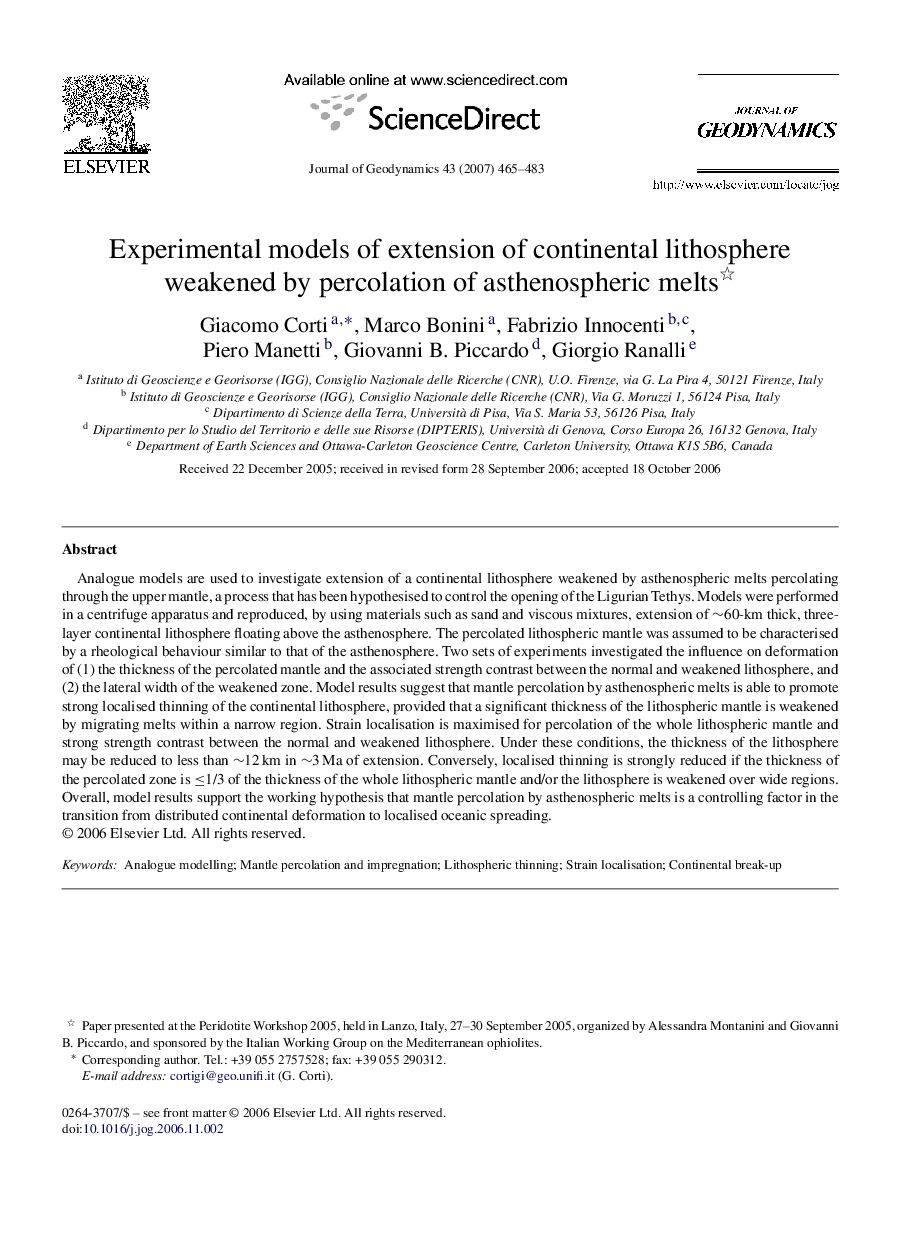| Article ID | Journal | Published Year | Pages | File Type |
|---|---|---|---|---|
| 4688799 | Journal of Geodynamics | 2007 | 19 Pages |
Abstract
Analogue models are used to investigate extension of a continental lithosphere weakened by asthenospheric melts percolating through the upper mantle, a process that has been hypothesised to control the opening of the Ligurian Tethys. Models were performed in a centrifuge apparatus and reproduced, by using materials such as sand and viscous mixtures, extension of â¼60-km thick, three-layer continental lithosphere floating above the asthenosphere. The percolated lithospheric mantle was assumed to be characterised by a rheological behaviour similar to that of the asthenosphere. Two sets of experiments investigated the influence on deformation of (1) the thickness of the percolated mantle and the associated strength contrast between the normal and weakened lithosphere, and (2) the lateral width of the weakened zone. Model results suggest that mantle percolation by asthenospheric melts is able to promote strong localised thinning of the continental lithosphere, provided that a significant thickness of the lithospheric mantle is weakened by migrating melts within a narrow region. Strain localisation is maximised for percolation of the whole lithospheric mantle and strong strength contrast between the normal and weakened lithosphere. Under these conditions, the thickness of the lithosphere may be reduced to less than â¼12 km in â¼3 Ma of extension. Conversely, localised thinning is strongly reduced if the thickness of the percolated zone is â¤1/3 of the thickness of the whole lithospheric mantle and/or the lithosphere is weakened over wide regions. Overall, model results support the working hypothesis that mantle percolation by asthenospheric melts is a controlling factor in the transition from distributed continental deformation to localised oceanic spreading.
Related Topics
Physical Sciences and Engineering
Earth and Planetary Sciences
Earth-Surface Processes
Authors
Giacomo Corti, Marco Bonini, Fabrizio Innocenti, Piero Manetti, Giovanni B. Piccardo, Giorgio Ranalli,
